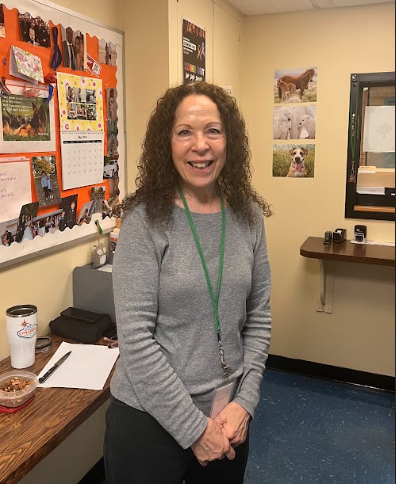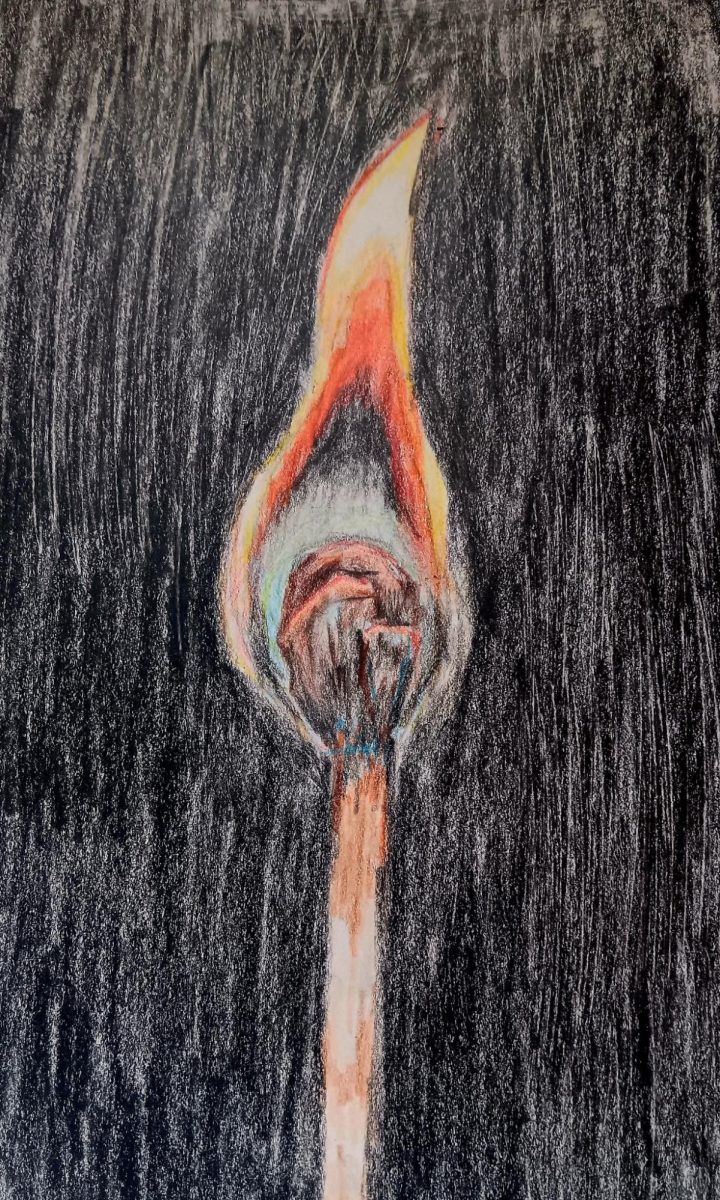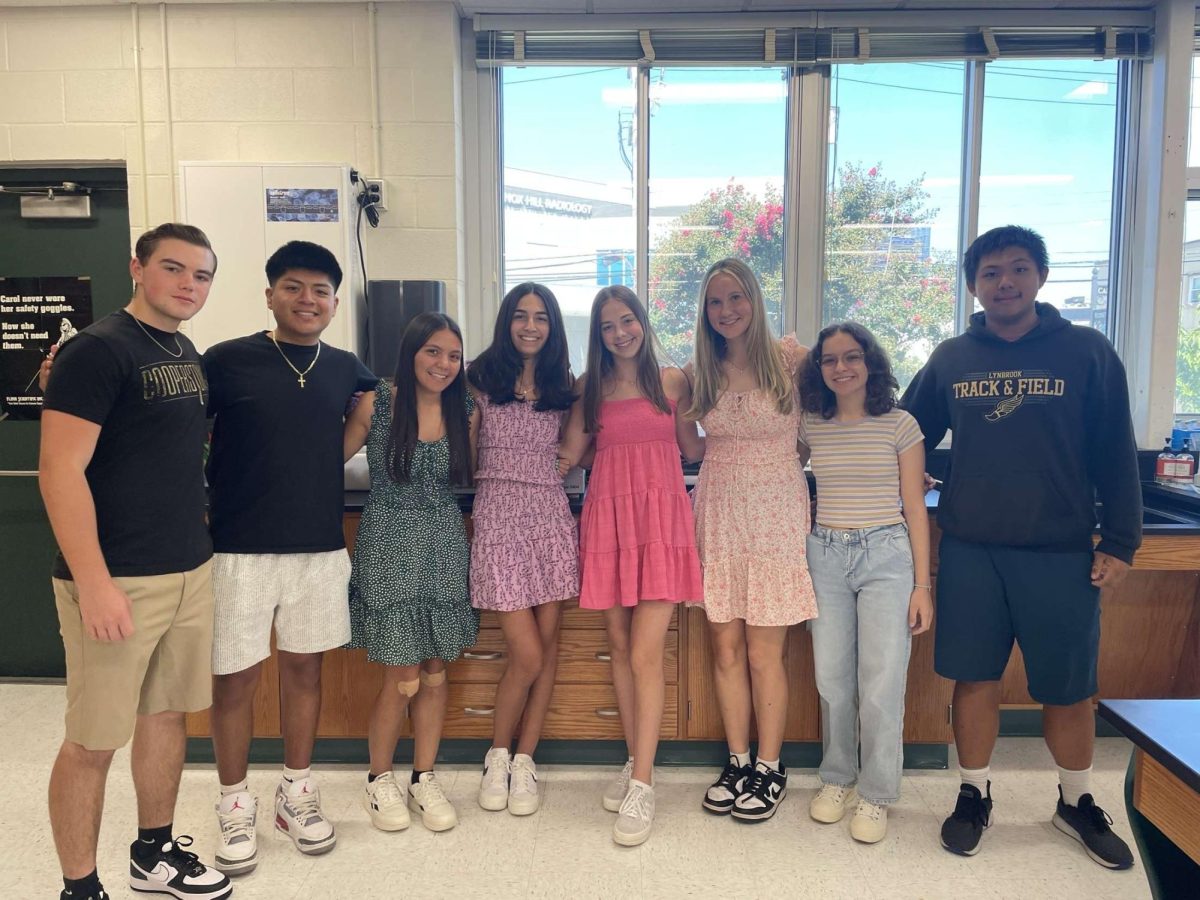After formulating their research questions, collecting data, and analyzing their results for the past year, LHS’s senior researchers finally submitted to the Regeneron Science Talent Search (STS) competition on Tuesday, Nov. 5.
Regeneron STS is a prestigious science and math competition for high school seniors led by the Society for Science. For this competition, students conducted their research throughout junior year and into the summer. During the fall of their senior year, they work to perfect their research papers and finish data collection if necessary. Regeneron consists of 12 tasks, and when all are complete, applicants are ready to submit. These tasks include a research paper, a common app essay, an essay on the student’s potential as a scientist, information on one’s mentor, past research experiences, as well as basic contact info.
STS looks for students who have scientific leadership abilities. Out of the average 2,000 students who apply, the top 300 STS scholars receive $2,000 each and their schools receive $2,000 to use for STEM activities. Furthermore, this number is narrowed down to just 40 finalists who receive at least $25,000, with the top-10 winners receiving between $40,000 and $250,000. The top 40 finalists are also invited to a week-long trip, this year’s being in Washington, D.C., to present their findings alongside the other finalists.
About this year’s senior researchers and their projects:
Erick Diaz: Diaz analyzed “Patterns of Brain Atrophy in Alzheimer’s Disease Patients with and without Behavioral Symptoms.” Diaz said, “My project studied brain atrophy in Alzheimer’s patients using their past MRI scans from an online database. I measured atrophy with brain volume and surface area to see if a development of behavioral symptoms caused greater atrophy in the brain.”
Katy Gottlieb: Gottlieb studied “The Effect of Ultraviolet Irradiation on the Germination, Growth, and Development of Arabidopsis thaliana.” Gottlieb explained, “After making agar plates and sterilizing the seeds, I exposed the seeds to UV light to see how the light would affect the seeds’ growth as well as if it would affect how the BRCA1 breast cancer gene repairs DNA.”
Stacey Krivitsky: Krivitsky completed her research on “Investigating the Physical Mechanism of the Buzz Phenomenon in a Supersonic Intake.” Krivitsky explained her research aims to further understand a dangerous occurrence in high-speed flight known as “buzz.” She said, “I conducted simulations in MATLAB and Fortran [programming platforms] to solve two sets of partial differential equations.”
Gaby Ramirez: Ramirez investigated “The Effect of Increasing Temperatures on the Root Properties of Crassulacean Acid Metabolism (CAM) plants.” Ramirez said, “[I] replicated the current and anticipated environments of Chad and cultivated CAM plants in these settings to examine the effects on their root properties.”
Eric Reilly: Reilly researched “The Visible-Light-Induced Photocatalytic Oxidation of Aromatic Alcohols to Carbonyls and Peroxides using Green Chemistry Principles.” “My project involves using green chemistry to create sustainable reaction conditions for pharmaceutical production and medicinal synthesis. I tested various photocatalysts, wavelengths of light, atmospheres, and solvents, finding that multiple dye-based photocatalysts performed just as well as less sustainable transition metal catalysts. Additionally, the use of dye-based catalysts resulted in the novel formation of peroxides.,” said Reilly.
Kelsey Roth: Roth researched “The Effect of Outflow and Turbidity on the Water Temperature, Air Quality, and Humidity in the Great South Bay of Long Island.” Roth explained, “My project explores the impacts of wastewater outflow and turbidity, water temperature, air quality, and humidity in the Great South Bay of Long Island. I deployed and utilized sensors at two locations, Harbor Isle (located further from the outflow pump) and Barnum Island (located closer to the outflow pump), to measure the impacts of outflow on the water temperature, air quality, turbidity, and humidity of both locations.”
Kate Santoli: Santoli researched “The Effectiveness of Social and Monetary Rewards vs. Punishments in a Learning Paradigm.” Santoli explained, “I tested different types of incentives in terms of how much they improved learning in the online test, the serial reaction time task.”
Simon Yu: Yu completed his project on “Investigating the Production of 40Ca in SMSS J0313-6708: Analyzing the Nucleosynthesis Consequences of Various Astrophysical Models.” To try and put his project in layman’s terms, Yu compared stars to LEGO blocks. He explained, “Stars work like LEGO blocks: they assemble many different ‘blocks’ (elements) together to make a large ‘build’ (heavy element). However, one star, SMSS J0313-6708, produces heavy elements (specifically 40Ca) in an unusual manner. To investigate this mechanism, I looked into the intricacies within the CNO cycle. By creating custom thermodynamic profiles, I was able to simulate a wide range of conditions to receive values for 40Ca. Using a MATLAB suite, I created a 3D scatterplot showcasing the coordinates of reaction rate, temperature, and density on the XYZ plane respectively. With a fourth variable being the output of 40Ca, the color of each point would be determined by this output. From the graph, I was able to conclude that although there was a trend between temperature and 40Ca, no definite conclusions are able to be made of the source of 40Ca in SMSS J0313-6708 because of a flux diagram.”

Ultimately, submitting to Regeneron was like a weight lifted off one’s shoulders for these senior researchers. Santoli expressed, “It was such a relief to submit to Regeneron. [After] working throughout the summer and continuing my research in the fall, I am so proud of all my hard work and am truly grateful for this experience.” Santoli shared that the senior researchers held a “submission party” to commemorate all their hard work and press the bright green submit button altogether. Ramirez agreed, commenting, “Submitting to Regeneron with all my research classmates was a very surreal experience. I am proud of us all and look forward to conducting more research in the future.”
Science Research and AP Biology teacher Charles Vessalico expressed, “It is a challenge and privilege to guide students through the STS application process each year. For many students, it is the hardest thing they ever had to do in school. Only about 2,000 students in the entire country complete the rigorous application. I feel extremely proud whenever a senior in research is able to complete the application.” Vessalico even refers to this group as “The Great Eight,” in addition to calling them the “STS Slayers,” and sees great potential in these senior researchers. They all now highly anticipate the arrival of January 9 when the results of who made the semi-finals will be announced.





















